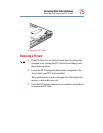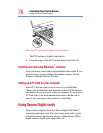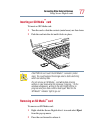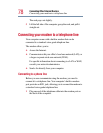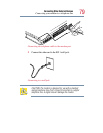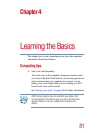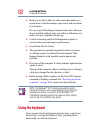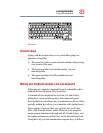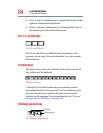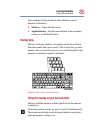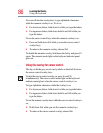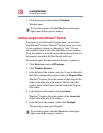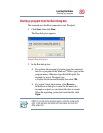
82
Learning the Basics
Using the keyboard
❖ Back up your files to disks (or other removable media) on a
regular basis. Label the backup copies clearly and store them
in a safe place.
It’s easy to put off backing up because it takes time. However,
if your hard disk suddenly fails, you will lose all the data on it
unless you have a separate backup copy.
❖ Use Error-checking and Disk Defragmenter regularly to
conserve disk space and improve performance.
❖ Scan all new files for viruses.
❖ This precaution is especially important for files you receive
via diskette, email, or download from the Internet. Take
frequent breaks to avoid repetitive-motion injuries and
eyestrain.
❖ Don’t turn off the computer if a drive indicator light indicates
a drive is active.
Turning off the computer while it is reading from or writing to
a disk may damage the disk, the drive, or both.
❖ Before turning off the computer, use the Turn Off Computer
command or Standby command. See “Powering down the
computer” on page 105 to learn more about Standby.
NOTE: The Windows
®
XP Professional operating system
records information, such as your desktop setup, during its
shutdown procedure. If you don’t let the Windows
®
XP
Professional operating system shut down normally, details
such as new icon positions may be lost.
Using the keyboard
Your computer’s keyboard contains character keys, control keys,
function keys, and special Windows
®
keys, providing all the
functionality of a full-size keyboard.




